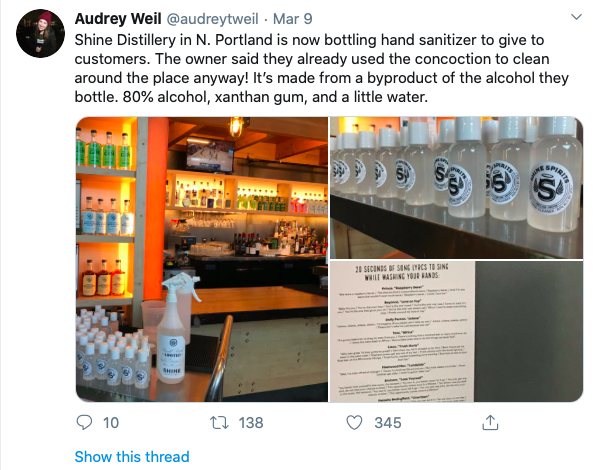COVID-19 Exposes Sharp Divide in Corporate Employee Relations
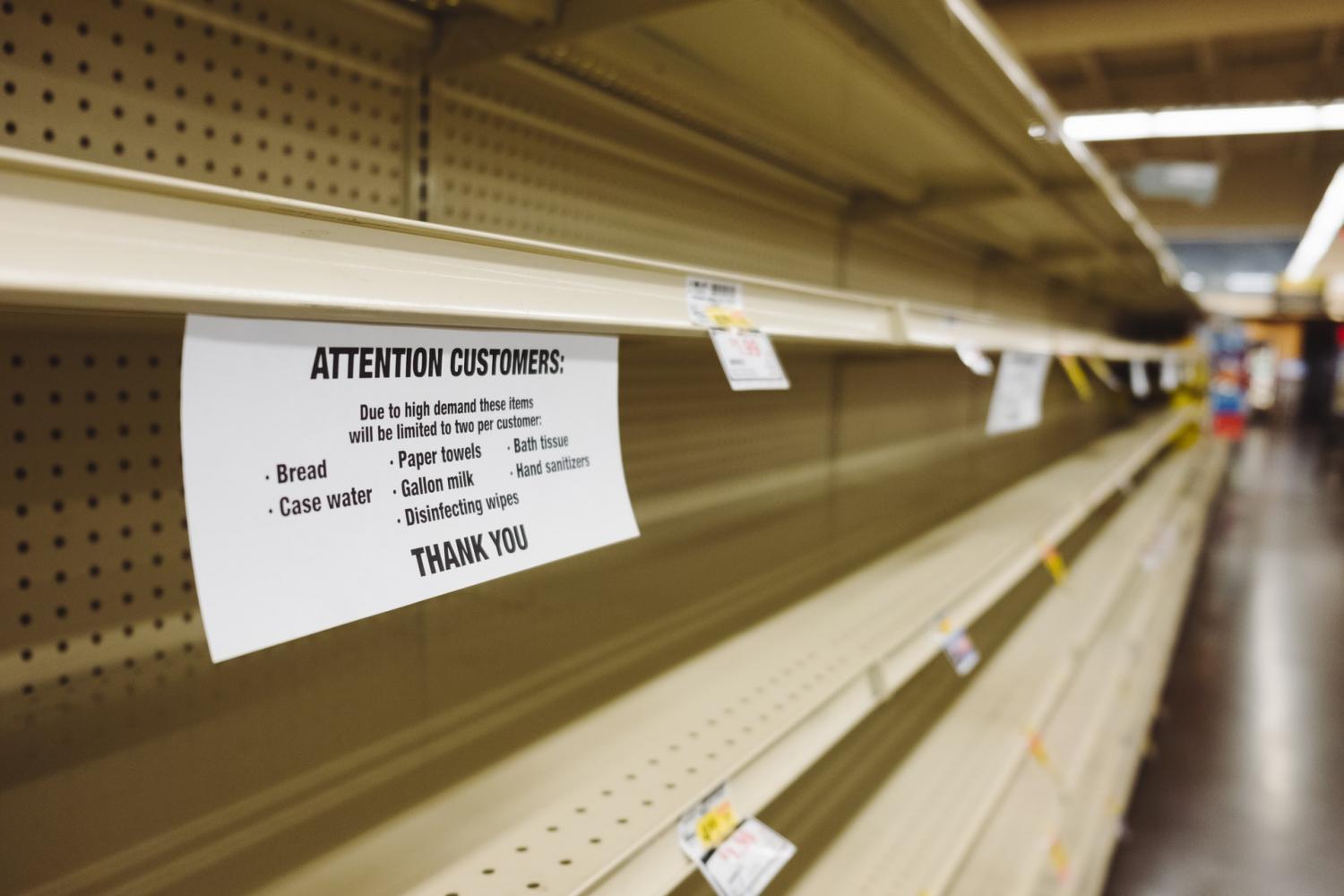
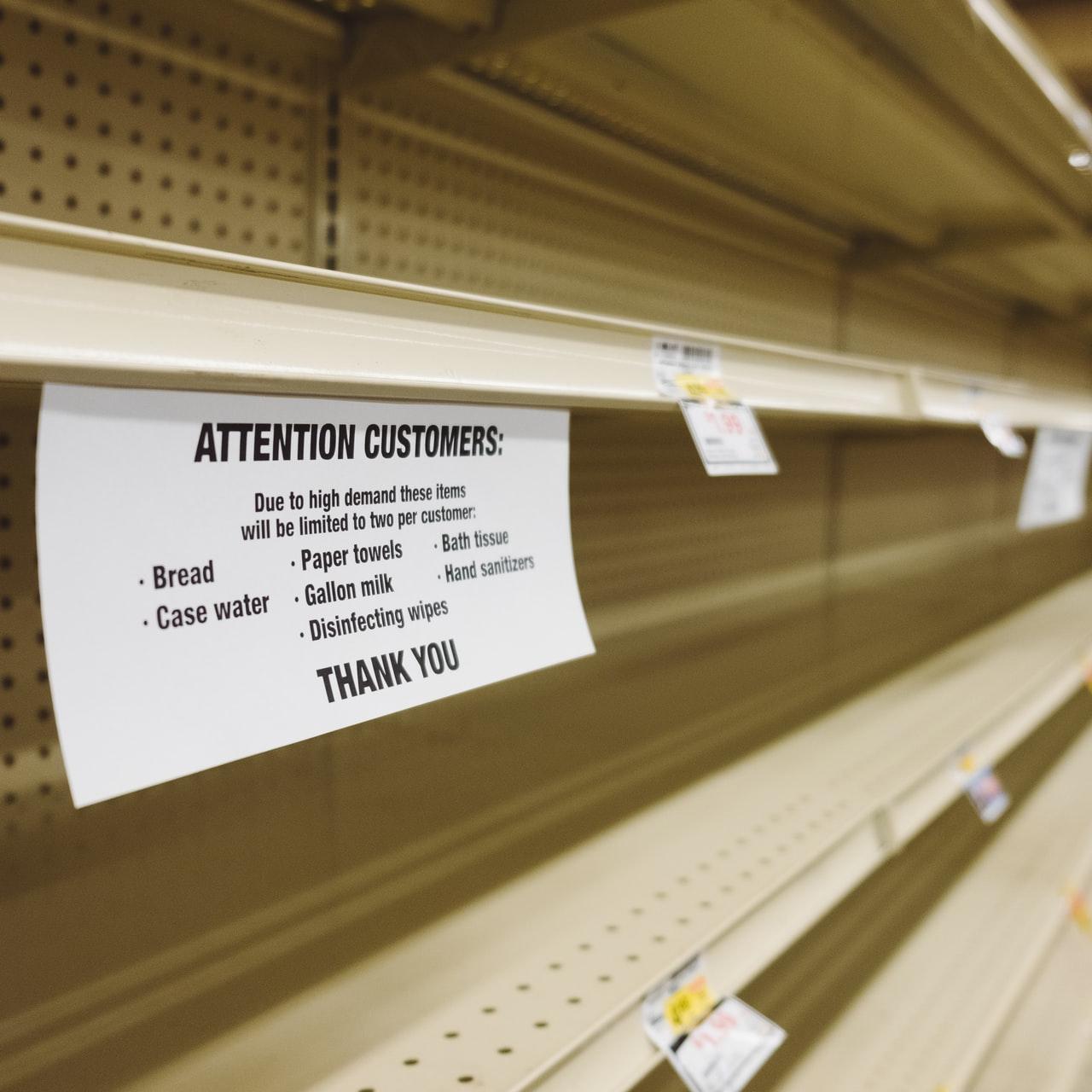
As the COVID-19 outbreak hits full blown crisis mode in the U.S., Kroger is among the retailers that has attracted unwanted media attention by distributing $25 gift cards to its employees. In other circumstances a $25 gift card would be a nice perk, if a rather ungenerous one considering the company’s reported $122 billion in revenue last year.
But these are circumstances unlike any other. Some corporate leaders are setting a high bar for worker care while others have some ‘splaining to do.
COVID-19 brutally revealed the corporate soul
If corporations are people, then the COVID-19 outbreak has exposed substantial moral fiber in some, and deep fissures in others.
In terms of worker protections under COVID-19, one company that has set a high bar is GG Hospitality, a boutique management firm co-owned by Singapore investor Peter Lim with former Manchester United players Gary Neville and Ryan Giggs.
Earlier this week Neville announced that the company’s Stock Exchange and Hotel Football luxury properties in Manchester, England will be closed to the public, and all 176 beds will be donated for free use by National Health Service workers in need of isolation from their families.
Neville also made it clear that taking care of the company’s workers is a top priority. As of this writing, the company reportedly has no plans to lay off employees or put any on unpaid leave.
“We feel that we have a responsibility to protect our team members,” he said at the outset of a brief video statement.
“Our company’s success is all down to our team and we feel it is critical that we look after everyone in these challenging times,” he emphasized in the middle of the statement.
“We will do our utmost to ensure our team members are looked after,” he said at the end.
In contrast, Kroger’s offer of $25 per employee (a benefit that must be used in 60 days) is pretty weak tea.
A gaping hole in federal policy
To be fair, Kroger is not alone in failing to develop a responsive sick leave policy. Unlike firms in the hospitality industry, supermarkets have been admonished to stay open during the crisis.
Journalist Judd Legum has been taking a deep dive into the supermarket worker issue for the newsletter Public Information, in which he describes why the newly passed federal sick leave policy is not helping many supermarket workers.
The policy exempts companies with more than 500 employees, on the assumption that large employers already cover their workers with fairly respectable sick leave benefits.
That is not necessarily the case, especially in industries that rely heavily on part-time workers. Many companies, like Kroger, do not necessarily offer sick leave to part-time workers.
In addition, companies with sick leave benefits for full time workers may be entitled to withhold pay from the first day off, depending on variations in state labor laws. Another loophole applies to new workers and recent hires, who are generally not entitled to paid sick leave until months into their tenure.
The tenure-based restrictions will directly impact workers at supermarkets that are scrambling to hire additional workers to handle the crush of panic-fueled grocery shopping.
Where are the COVID-19 tests?
There is another loophole of even greater consequence. As noted by Legum, Kroger amended its sick leave policy, but it only applies to workers who are under 14-day quarantine after testing positive for the COVID-19 virus.
Walmart, Olive Garden and McDonald’s are also among a growing number of companies to offer similar test-linked policies — and that’s the problem.
The fact is, there is no COVID-19 test widely available in the U.S. and there won’t be for weeks, even as the number of confirmed cases skyrockets and hospitals run short on supplies.
In other words, many workers are on their own if they feel sick and need to stay home.
The same goes for other workers who may feel well enough to work but need a test because they are concerned about potentially spreading the virus to others, especially if their household includes someone who is elderly or has underlying medical conditions.
As for why the U.S. did not begin to ramp up testing and take other steps to prepare months ago, that picture is beginning to come into sharper focus.
In a special report on March 18, Reuters noted that South Korea reported its first COVID-19 case in January, on the same day that the U.S. reported its first case — yet South Korea (population 51 million) has already tested more than 290,000 people, while the U.S. (population 330 million) has only completed approximately 60,000 tests as of press time.
The results are stark: with testing and other aggressive measures at full scale weeks ago, South Korea now appears to have weathered the worst of the crisis. In the meantime, the U.S. is only just beginning to reel under the blow.
Reuters and other news organizations have described number of elements with at least one common denominator: a profound lack of leadership and direction from the top, with much the resulting chaos attributed to the U.S. President’s years-long work of dismantling the nation’s existing preparedness systems.
Another piece of the puzzle is the role of the President’s ubiquitous son-in-law and office advisor Jared Kushner.
“[He] has created his own team of government allies and private industry representatives to work alongside the administration’s official coronavirus task force, adding another layer of confusion and conflicting signals within the White House’s disjointed response to the crisis,” The Washington Post reported on Wednesday.
Mother Jones and other news organizations are now questioning whether Kushner’s familial relationship with the "tech-driven" health insurance company Oscar may have played a role in the flat-footed federal response to the COVID-19 threat.
As described by Mother Jones, Oscar was co-founded in 2013 by Kushner and his brother Joshua, through a holding company.
That’s a whole ‘nother can of worms, as the saying goes. In the meantime, Congress has left quite a sick leave mess for the private sector to clean up.
Rolling up their collective sleeves and tackling the problem in a meaningful way will be a true test of character for corporate leaders. Some have already fallen down on the job, but there is still plenty of time to pick themselves up and get to work.
Editor's note: 3BL Media realizes many organizations have not budgeted for communicating their response to COVID-19. 3BL believes it’s important to help these purpose-driven organizations share how they're working to keep their customers, employees and communities safe. Organizations with press releases that fall into this category should feel free to submit them to COVID19@3blmedia.com for distribution over the CSRwire network at no charge.
Image credit: Wesley Tingey/Unsplash
Marriott Furloughs Employees, Angers Customers Amidst Pandemic


As people decide to stay home — out of choice or necessity — during this coronavirus outbreak, many businesses are struggling to navigate turbulent waters. Many shops and businesses are either pausing activity or limiting services. Essential businesses are staying open, but some are slowing operations. Marriott is one such example — and, unfortunately for the company’s reputation, it has not been going well.
Hotels brace for a long shutdown
If they can, hotels are staying open for business. States like Pennsylvania consider hotels “essential.” But the global slow-down of travel for business and leisure is hurting the hospitality industry's bottom line. Some hotels are closing temporarily due to lack of demand.
The American Hotel and Lodging Association (AHLA) estimates that 4 million jobs have already been eliminated, and hotels that are remaining open are below 20 percent occupancy.
Speaking at a recent meeting between hotel CEOs and the United States president and vice president about an industry bailout, Chip Rogers, AHLA president and CEO said:
“The impact to our industry is already more severe than anything we’ve seen before, including September 11th and the great recession of 2008 combined. The White House and Congress can take urgent action to protect countless jobs, provide relief to our dedicated and hardworking employees, and ensure that our small business operators and franchise owners — who represent more than half of hotels in the country — can keep their doors open.”
A $1 trillion stimulus package is likely to be on its way to American businesses and individuals, but employees are still on shaky ground.
Marriott employees realize furloughing isn’t an answer
Companies like the Pebblebrook Hotel Trust have laid off thousands of workers, but Marriott International has decided to take a different route with furloughs. Of its 174,000 workers around the world, the company plans to furlough tens of thousands, according to news reports.
While furloughs can enable an employee to jump back into his or her job when it becomes available again, one furloughed employee discovered a key downside. Without being laid off, workers are often not able to collect unemployment benefits, even though, with zero hours of work, the paychecks on which they depend have disappeared.
Marriott claims that furloughed employees will continue to receive healthcare benefits during their time off, but the specifics are not so supportive.
Employees are receiving letters saying that their healthcare benefit deductions will be taken from their reduced paychecks. And if the deductions exceed their paychecks, Marriott will bill them the difference — a public relations black eye for the company as its CEO, Arne Sorenson, made almost $13 million in total compensation in 2018, according to one source.
While an employee has a right to seek alternative employment when he or she is furloughed, finding work in this rapidly deteriorating economic climate is a disastrous prospect.
Customers are piling on Marriott as well
Meanwhile, a Marriott spokesperson told CNN: “We are working quickly to mitigate the impact to our business while also focusing on assisting our associates, our guests and our owners. While the ultimate impact is difficult to predict at this time given the fluidity of the situation, we remain confident in our long-term prospects."
On March 13, Sorenson sent an email newsletter telling customers the company is continuing to be guided by its core value to “take care of our guests and associates.” The message noted that customers should feel confident when booking and that cancellation policies were becoming more flexible.
Even so, many guests have taken to Twitter to share their not-so-accommodating experiences with Marriott customer service. One individual was quick to share his story of how he was refused a refund for his booking deposit even though he had been exposed to the virus.
The company’s actions at the moment are far from aligning with Marriott’s stated standards and principles. With a total of nearly 1.4 million rooms, Marriott is the world’s largest hotel company. The actions it takes matter and have the potential to lead the industry.
But the company isn’t doing that.
In this time when the masses are feeling uncertain about their health and finances, employers should strive to be that valuable support system. And if they decide not to be, that can add unnecessary doubt, and even fear, to an already precarious situation.
It’s difficult to hide company actions from the public in this digital age. A search on Twitter for #Marriott reveals plenty. What’s better for humanity and business is to be transparent and do the right thing from the start.
Editor's note: 3BL Media realizes many organizations have not budgeted for communicating their response to COVID-19. 3BL believes it’s important to help these purpose-driven organizations share how they're working to keep their customers, employees and communities safe. Organizations with press releases that fall into this category should feel free to submit them to COVID19@3blmedia.com for distribution over the CSRwire network at no charge.
Image credit: Unsplash
COVID-19 on the Front Lines: Another Leadership Void for CEOs to Fill
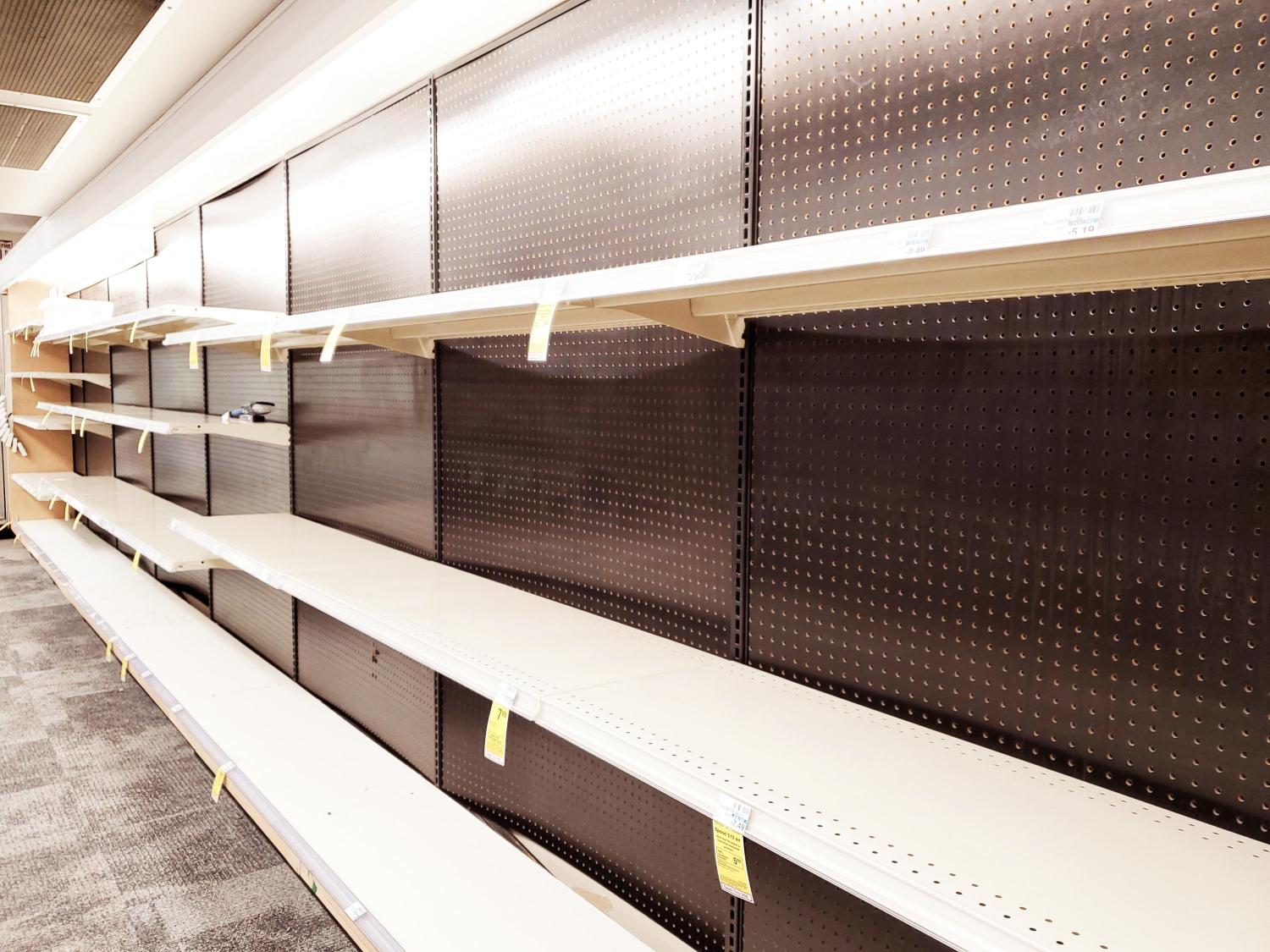
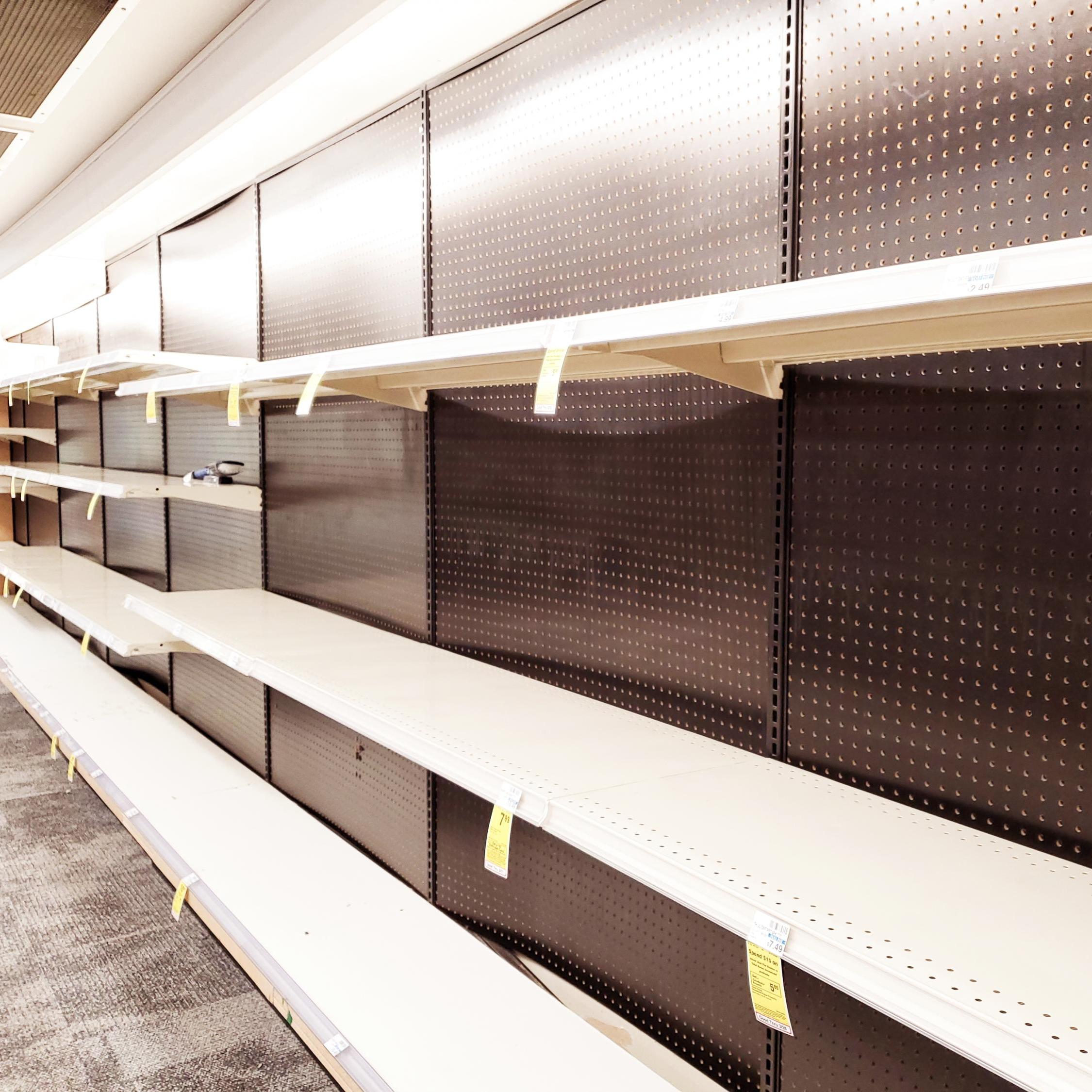
Panic-fueled shopping has become the rule of the day as COVID-19 spreads across the U.S., exposing yet another gaping hole in national leadership.
Two holes, in fact.
On the regulatory side, the federal government has failed to reinforce laws that should protect front-line grocery clerks and other service workers from exposure to infected customers and co-workers. And on the messaging side, there has been no coordinated, nationalized effort to exhort the shopping public to exercise the basic laws of human decency when buying food and other necessities.
The invisible OSHA
To be fair, everyone is grappling with an unprecedented situation.
Nevertheless, “too little, too late” would be a fair characterization of the federal response to worker safety protections under OSHA, the federal Occupational Safety and Health Act.
The Occupational Safety and Health Administration did not issue comprehensive worker protection guidelines on COVID-19 until March 9, just four days before the president declared a national emergency — even though serious concerns were raised as early as January by U.S. Senator and former presidential candidate Kamala Harris (D-California) among other top officials.
In effect, OSHA provided employers with just four days to develop an “infectious disease preparedness and response plan that can help guide protective actions against COVID-19” before the president acknowledged that the nation was already in the grip of a full-blown crisis.
If that sounds like not enough time to prepare, that's because it is not enough time to prepare.
The window for preparation to take on COVID-19 has closed
It is a safe bet that as of March, most businesses in the U.S. did not already have a plan to take on this pandemic on their books.
Even for those with a plan, instant activation is impossible unless they also have engaged in an ongoing regimen of employee education and training, including active drills as well as classroom instruction.
Without that continuity, the lag between having a plan and implementing it begins to stretch out. Updating a plan takes time, coordinating management takes time, and, in particular, providing guidance to both employees and customers takes time.
It also takes time for people — both employees and customers — to assimilate such guidance and then make it a habit.
That’s a key consideration when one minor slip-up in a restroom or a workplace kitchen — touching a light switch with a bare hand, for example — can potentially spread infection.
Where is the leadership?
OSHA is just one element in a far broader failure of federal leadership on COVID-19 preparedness, as amply demonstrated by the president’s public statements leading up to the March 13 emergency declaration.
Making matters worse is the president’s messaging failure on community behavior.
What is needed is a “fireside chat” admonishing the public to behave with respect, civility, and consideration for grocery store clerks and other front-line workers.
Instead, the horror stories are mounting, even as the president congratulates himself for predicting the COVID-19 pandemic “before it was called a pandemic.” (Which many news sources were quick to show were false.)
Panic-buying began setting in days before the emergency declaration, and people also began rushing to break plans for trips, weddings and other get-togethers.
On March 11, reporter Amanda Mull of The Atlantic noted the emotional toll on workers confronted by one worried, panicked customer after another, including those who deal with customers by phone.
“Often, the people … managing the underlying fear and panic are overwhelmed and undertrained hourly workers or customer-service agents, who now form the de facto front line of pandemic response in the United States,” she wrote.
Three days after the emergency declaration, Pro Publica’s Alexandra Zaya reported on panic-buying in grocery stores, reporting: “We’re maneuvering past one another in crowded aisles and fighting over frozen food. We’re waiting in snaking lines and exchanging money with tired cashiers, who say they have been working for six days straight and have never seen so many customers in their lives.”
The situation is especially threatening for the many store clerks who are elderly or have underlying health issues and cannot afford to give up their jobs.
Where are the CEOs?
The absence of national leadership on matters of public concern has been a pattern over the last three years, and the COVID-19 crisis is yet another test for the ability of individual CEOs to step in, step up, and lead the public on a common cause.
With COVID-19, the results have been mixed. Some retailers of non-essential goods proactively closed their stores, and some in that group have guaranteed pay for their workers, at least for the present.
The more immediate burden is on groceries and pharmacies, which have been told to remain open during the crisis. Some have begun taking steps to reduce risk, such as opening early for senior shoppers, but many others have been caught flat-footed.
Based on the reporting so far, there are a number of steps that CEOs and business owners in the grocery and pharmacy sectors can take to demonstrate leadership and reduce risks:
1. Review and implement OSHA guidance on COVID-19.
2. Establish an employee helpline for assistance with both emotional and financial issues.
3. Assign extra staff to manage customer flow, calm customers, and ensure that OSHA guidance is followed.
4. Provide signage that directs customers to a hotline, instead of peppering frontline workers with their questions and concerns.
5. Communicate with customers and clients by any means at hand — on websites, by email, social media and letters-to-editors — to promote and support civility and responsible behavior.
Above all, every CEO — those who have been lavishly and disproportionately rewarded for their labor compared to the average worker — needs to give serious thought to how they accumulated their wealth, and how to help remediate the desperate situation now faced by their employees and millions of other fellow citizens in this time of crisis.
Image credit: Leon Kaye
Pre-Competitive Collaboration Gets Real: Live Entertainment, Auto Companies Form Coronavirus Task Forces


The novel coronavirus pandemic has everyone rethinking how we live and work. Existing issues within the global economy — from limited paid sick leave for hourly workers to lax corporate governance — are now impossible to ignore. And the calls to come together amidst a staggering public health crisis have compelled even the most competitive of industries to embrace collaboration — among them the live entertainment sector, which recently formed a coronavirus task force in response to the pandemic.
Live entertainment and ticketing companies form coronavirus task force
In the face of what was, at the time, a veritable leadership vacuum in Washington, D.C., last week the top names in live entertainment and promotion formed a global task force to unify their response to the coronavirus pandemic.
CEOs and other executives from companies including AEG, Live Nation, Creative Arts Agency, United Talent Agency and Paradigm signed on to participate. And the coronavirus task force is already holding "conference calls several times per day," an unnamed source told Variety.
"Even given the competitive nature of who is on the call, the circumstances surrounding our business has allowed honesty and respect to take hold, and work to the common good of our industry," another unnamed source told Billboard.
The overall goal is to "be consistent in our message, to create protocols that will make best efforts to protect our artists, crews, associates and as importantly, the fans," said the source, who Billboard identified as a task force member.
AEG postponed its famed Coachella Valley Music and Arts Festival, originally scheduled for mid April, at the beginning of last week. Shortly after, both Los Angeles-based AEG and its top competitor, Live Nation, announced they would halt all events through at least the end of the month, the Los Angeles Times reported.
Closures are heartbreaking decisions for many, particularly those who spend all year preparing to make these events memorable for fans, but they're necessary to promote social distancing and prevent the spread of the virus.
"We feel fortunate to have the flexibility to reschedule concerts, festivals, and live events as needed, and look forward to connecting fans with all their favorite artists and live entertainment soon,” the task force said in a joint statement.
The auto industry follows suit
Earlier this week, the "Big Three" U.S. automakers — General Motors, Ford Motor Co. and Fiat Chrysler Automobiles (FCA) — followed the entertainment sector's lead, forming their own coronavirus task force with the United Auto Workers (UAW) union.
Chaired by UAW President Rory Gamble and the three automakers' respective CEOs, the task force will focus on improving protections for workers and limiting the spread of the virus in manufacturing plants and other facilities, according to news reports.
“This is a fluid and unprecedented situation, and the task force will move quickly to build on the wide-ranging preventive measures we have put in place,” the CEOs of the three companies said in a joint statement, as quoted by Reuters.
Over the past two weeks, the UAW has put increasing pressure on automakers to close plants in order to prevent the spread of the novel coronavirus among manufacturing workers. “These companies will be put on notice that the UAW will use any and all measures to protect our brothers and sisters,” Gamble wrote in an email to the New York Times on Tuesday.
Some auto plants began to close their doors or implement partial shutdowns early this week. And on Wednesday, following a task force meeting, the Big Three announced they will close all U.S. factories until at least March 30 to contain the spread of the virus, CNBC reported.
It is not immediately clear from news reports or union statements whether employees will receive full pay while plants are shut down, but union workers typically continue to be paid during temporary plant closures due to part shortages or other factors.
For his part, Gamble considers the move a victory for union workers: “UAW members, their families and our communities will benefit from today’s announcement with the certainty that we are doing all that we can to protect our health and safety during this pandemic,” he said in a statement on Wednesday.
The task force's job is far from over, as CEOs say they'll continue to work with the union on how to implement proper sanitation and social distancing within factories once production resumes. “Especially in these challenging times, we must continue working together and putting people first,” Kumar Galhotra, Ford’s president of North America, said in a statement.
Indeed.
As the coronavirus crisis continues to disrupt lives around the world, the public's eyes are on the industries that do — and don't — come together to protect their employees and the public.
Image credit: Anthony DELANOIX/Unsplash
Leafy Greens the Target of New Foodborne Illness Action Plan


Indeed, the U.S. is undergoing an unprecedented public health crisis, yet the need to ensure a safe food supply is clearer now that ever. A foodborne illness outbreak now, related to anything from meats to leafy greens, would devastate stores and consumers already reeling over the possibility of having to practice social distancing for weeks, if not months on end.
To that end, after several recent instances of food recalls and foodborne illness outbreaks, the U.S. Food and Drug Administration (FDA) is targeting leafy greens in a new action plan. A recent statement by the Commissioner of Food and Drugs and the Deputy Commissioner for Food Policy and Response says leafy greens are the cause of “too many foodborne illnesses.” The FDA is responding with a multi-faceted 2020 Leafy Greens STEC Action Plan. (STEC stands for Shiga-toxin producing E. coli, which can cause serious health conditions or even death.)
Leafy greens are some of the most widely eaten vegetables, and consumers can normally eat them without becoming sick. However, romaine lettuce and other leafy greens are still too often implicated in foodborne illness outbreaks, according to the FDA, which says the entire industry’s supply chain can do better.
But the FDA infers that the buck doesn’t stop at the growers and sellers. “Food safety is a shared responsibility that involves food producers, distributors, manufacturers, retailers and regulators,” the FDA stated on the website.
Hence, the FDA’s new action plan.
New standards for leafy greens producers
The FDA plans to collaborate with stakeholders in the public and private sectors to deliver a more unified response to the issue.
This action plan expands the standards of the Food Safety Modernization Act's Produce Safety Rule and outlines steps to address foodborne illness prevention, response and “knowledge gaps.”
The prevention piece will address education and technical aid to stakeholders and other companies. The plan’s response actions will include publishing a report of three E. coli outbreaks linked to leafy greens in the last two months of 2019. Science and research efforts will also be developed to breach gaps in understanding how pathogens can contaminate produce. The FDA will be working with industry partners to complete these steps.
Highlights of the plan also include efforts to increase water safety, food safety education and food cleanliness.
On the producer’s end, leafy greens growers can expect a greater emphasis on crop inspection to pinpoint gaps in food safety practices.
Responding to a food outbreak crisis
As foodborne outbreaks increase, the FDA has been challenging producers to step up their game when it comes to food safety. Growers have been slowly responding with preventative efforts to keep contaminants away from the vegetables, but the disturbing number of people getting sick from tainted leafy greens has given the sector a black eye. When foodborne illnesses move past prevention and into an outbreak, how are producers responding?
Dole is one producer of fresh fruits and vegetables that has been affected by numerous recalls of romaine lettuce that was grown in certain areas of the U.S. When the FDA released an advisory to consumers to avoid romaine lettuce in 2018, Dole made three promises to consumers: to only ship produce grown in areas not listed in the FDA advisory; to clearly label all romaine lettuce with the harvest date and growing region; and to follow up with retailers to ask that any unwrapped heads of romaine lettuce be clearly labeled.
Although leafy greens are often implicated, other foods are also prone to contaminants if they are not grown, distributed or prepared correctly.
Going beyond the bags of lettuce
Chipotle is a classic example of a food company’s response to foodborne illness outbreaks, as the fast-casual chain has cropped up in the news multiple times for food poisoning. One of the latest outbreaks was two years ago, when 647 people became ill after eating food that was left out at unsafe temperatures. The restaurant chain responded to the outbreak by closing the restaurant and announcing that its employees across the country would be retrained, NPR reported.
Chipotle’s response is typical of companies that make the news for serving contaminated food. The CDC says the actions food companies take are two-pronged – to attempt to stop the food poisoning in its tracks and prevent future outbreaks. Actions may include retraining staff, recalling food, stopping processing, cleaning and disinfecting facilities and equipment, altering the company’s method of operations, or all the above. Food meant for the market may require a slightly different response and recalling produce off the shelves is often — and should be — the first step.
Everyone can relate to food poisoning. According to the FDA, about one in six Americans become sick from a foodborne illness. The solution to reducing the risk of outbreaks can become a long and complicated answer. However, the bottom line, according to the FDA, is that “faster and more thorough and helpful responses to outbreaks are needed.”
How will we know if FDA’s latest plan is successful? A decline of foodborne illnesses that are linked to the leafy greens sector would be a start. Don’t hold your breath, but let’s see what this plan can do, as securing public health has been more important than ever before.
Image credit: Pixabay
COVID-19 Tests the Limits of Social Media Tolerance


As the COVID-19 crisis spreads, social media platforms are faced with a reckoning. They were founded on a business model that does not account for the cost of risk mitigation. Simply put, the companies that have launched these platforms over the years do not train, support, cultivate and pension off professional reporters who are responsible for content. Now, they are literally facing life-or-death consequences. When the dust settles and the crisis has passed, it will be difficult to return to business as usual.
The lethal consequences of social media
Human rights advocates have fought to establish a chain of responsibility between the tolerance of hate speech on Facebook and other social media platforms and lethal real-world consequences.
The abuse continues with regard to hate speech, but over the past two years the pressure needle has moved toward the area of medical misinformation.
Last year, Facebook collaborated with the World Health Organization and the U.S. Centers for Disease Control and Prevention on a new effort to push back against misinformation on vaccines. Though not resolving the problem at its root, the strategy involves exposing more users to reliable sources and factual information.
The move indicated at least some measure of responsibility for social media content with potentially lethal consequences. That set the stage for a more concerted effort to police misinformation about COVID-19.
Facebook steps up on COVID-19
In contrast to the vague boundaries of hate speech, the consequences of spreading misinformation on COVID-19 are starkly apparent.
In South Korea, for example, researchers have determined that 46 members of the same church were infected after they all used the same spray bottle to dose themselves with saltwater in a misguided attempt to shield themselves from the virus.
With the vaccine response as a template, Facebook began clamping down on COVID-19 misinformation in January.
As of this week, Facebook’s anti-misinformation steps include, among others:
- Limiting misinformation and harmful content about COVID-19
- Connecting people to accurate information and helpful resources like the WHO and local health ministries
- Prohibiting ads intended to create panic or imply that certain products guarantee a cure or prevent people from contracting the coronavirus
- Temporarily banning ads and commerce listings selling medical face masks
- Matching $20 million in donations to support COVID-19 relief efforts and giving the WHO as many free ads as they need for their response, along with other in-kind support
In addition, Facebook modified its controversial policy of not fact-checking political advertisements. From now on, political advertisements that include misinformation about the virus will be blocked. (Editors note: As of press time, some TriplePundit writers have noted that Facebook is mistakenly blocking and marking as spam legitimate articles from sites like The Atlantic, The Independent, Eater and Vice.)
A coordinated effort on medical misinformation
Earlier this week, Facebook, Google, LinkedIn, Microsoft, Reddit, Twitter and YouTube also issued a joint statement collaborating on pushback against misinformation.
“We’re…jointly combating fraud and misinformation about the virus, elevating authoritative content on our platforms, and sharing critical updates in coordination with government healthcare agencies around the world,” the statement read in part.
Pinterest has not formally signed on to the collaboration, but it has set a high bar for action based partly on its previous vaccination advocacy.
Last year Pinterest acknowledged an “enthusiasm gap” between misinformation and fact-based information on its platform, partly fueled by financial benefit accruing to unreliable sources.
With that in mind, Pinterest blocked all search terms, recommendations and comments related to vaccines, and directed users to information from WHO and other reliable sources, and it posts the following message on vaccine-related searches:
“Pins about this topic often violate our Community Guidelines, which prohibit harmful medical misinformation. Because of this, we’ve limited search results to Pins from internationally-recognized health organizations. If you’re looking for medical advice, please contact a healthcare provider.”
In addition, Pinterest’s community guidelines specifically prohibit advice that has “immediate and detrimental effects on a pinner’s health or on public safety. This includes promotion of false cures for terminal or chronic illnesses and anti-vaccination advice.”
With that model in hand, Pinterest reacted swiftly to the COVID-19 outbreak. Searchers now encounter a “sparse” page of content provided by the World Health Organization when using the terms COVID-19 or coronavirus.
Setting the stage for a clampdown on hate speech and misinformation
The effort has extended to other platforms and other media as well. The online shopping platform Amazon, for example, did not sign onto the commitment, but it has removed misleading virus-themed products from its seller field.
Even Fox News, which has established a longstanding record of tolerance for misinformation, appears to have reached its limit with the COVID-19 outbreak.
For weeks, hosts on Fox vigorously downplayed the crisis, partly by comparing it to other public health issues.
The Washington Post, for example, reported that popular host Sean Hannity compared the virus-related deaths to victims of gun violence, remarking: "26 people were shot in Chicago alone over the weekend. I doubt you heard about it. You notice there’s no widespread hysteria about violence in Chicago.”
That changed abruptly last Friday, when Fox pivoted to full-blown support U.S. President Donald Trump’s declaration of a national emergency.
In what may be another sign of things to come, earlier this week Amazon reportedly took steps to ban the sale of Nazi propaganda, including Mein Kampf and children’s books, among others. The move follows a lobbying effort by Holocaust groups that dates back to Amazon’s earliest days.
As tragic and disruptive as the COVID-19 crisis is, it has torn away the protective shield from social media and other platforms and exposed their core responsibility for providing accurate information on matters of grave public concern.
Their response to COVID-19 may ripple into other areas when top policy makers acknowledge gun violence and hate speech as public health crises, too.
Editor's note: 3BL Media realizes many organizations have not budgeted for communicating their response to COVID-19. 3BL believes it’s important to help these purpose-driven organizations share how they're working to keep their customers, employees and communities safe. Organizations with press releases that fall into this category should feel free to submit them to COVID19@3blmedia.com for distribution over the CSRwire network at no charge.
Image credit: Pixabay
Fighters and Freeloaders: Some Corporations Lead on Human Rights While Many Lag
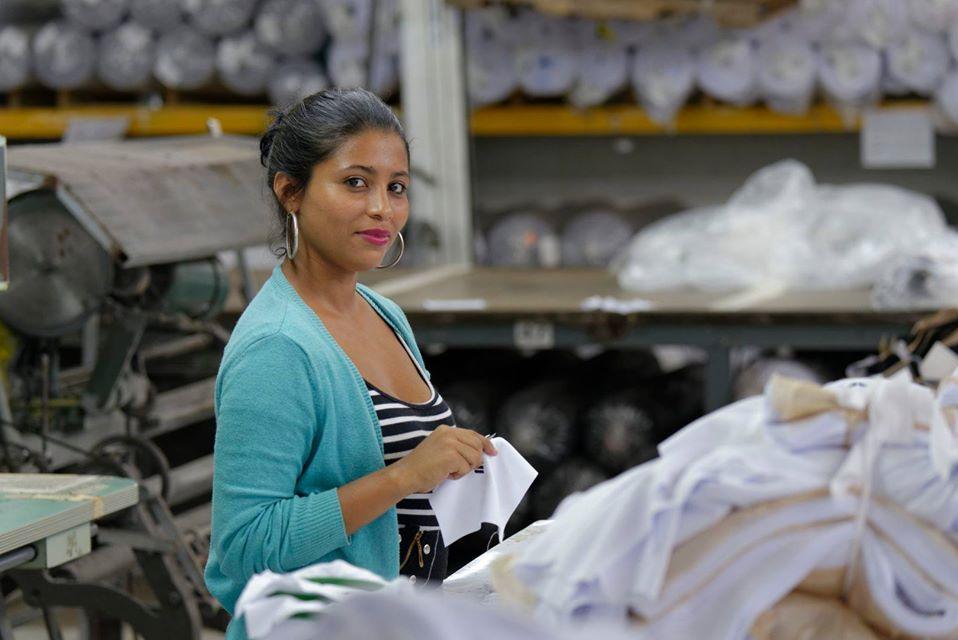

In the corporate social responsibility field, one basic strategy for progress is to amplify and celebrate the accomplishments of companies that establish a leadership role. The basic assumption is that a select group of leaders will inspire and motivate others to follow. Unfortunately, a new report casts doubt on the follow-the-leader model, at least as it applies to progress on human rights.
Human rights and fiduciary responsibility
The new report is a project of the not-for-profit coalition Corporate Human Rights Benchmark, Ltd. It provides a platform for comparing corporate progress on human rights from one year to another.
Launched in 2013, CHRB deploys experts from leading investor and business groups with a stake in human rights reporting, including the Netherlands pension fund manager APG Asset Management (APG), the global asset manager Aviva Investors, the advocacy group Business and Human Rights Resource Center, the United Kingdom-based responsible investment charity EIRIS Foundation, the Institute for Human Rights and Business (IHRB), and the private Nordic bank and asset manager Nordea Wealth Management.
These stakeholders draw a clear connection between human rights and bottom line fiduciary responsibility, declaring that “…without a sound commitment to human rights and implementation through due diligence, jobs can be precarious with poverty wages, indigenous peoples can be dispossessed of their ancestral lands and individuals can be subjected to modern day slavery, amongst a range of other potential impacts.”
CHRB further argues that “preventing adverse impacts on workers, communities and consumers is one of the most pressing challenges almost every company faces in today’s globalized marketplace.”
The failure of the market
CHRB developed its eponymously named Corporate Human Rights Benchmark report on the assumption that market competition has a unique power to drive change. That much is true, at least in some areas. The problem lies in applying the “race-to-the-top” model specifically to human rights.
The 2019 CHRB report covers 200 of the largest companies in four sectors that are considered high-risk for human rights: agricultural products, apparel, extractives, and communications technology and manufacturing.
Within that group are 100 companies that have been ranked for three years. There is still a long way to go, but as a group these companies have made significant progress. They started with a score of 18 percent in 2017 and achieved a score of almost 32 percent in 2019.
Several companies that began at the top in 2017 have continued to improve, including Adidas, Marks & Spencer, Rio Tinto and Unilever. Overall, approximately 75 percent of the 100 companies achieved at least some progress.
The devil is in the details, though. Aside from the 75 percent of the companies that have progressed, many others have continued to underperform.
“It is clear that a significant portion have not ‘taken part in the race;’ remaining static with minimal score changes,” the 2019 report notes, adding that the “low scoring non-movers could be seen as undermining their sectors and free-riding on the overall average improvements.”
In other words, the lagging companies bring down the average score of their entire sector, while also enjoying the general benefit of belonging to a sector that is progressing — thanks to the hard work of other companies, that is.
More signs of weakness in the race-to-the-top model
The new report finds another cause for concern. Another 100 new companies were ranked in 2019, but their starting scores indicate that they learned nothing from the original group.
Collectively, the 100 new companies only achieved an average score of 17 percent in 2019. That was not even equal to the average of 18 percent recorded for the first group of 100 in 2017.
CHRB does note that some companies have expressed interest in human rights bench marking even though they were not included in the 2019 report, indicating that the project has extended some influence outside of its immediate sphere. That, combined with the progress demonstrated by the ranked corporate leaders on human rights, makes a good case for continuing the benchmarking effort.
However, it is also clear that public benchmarking does not create the kind of competitive market pressure that can move entire sectors.
“In aggregate, the 200 companies are painting a distressing picture; most companies are scoring poorly and the UN Guiding Principles on Business and Human Rights (UNGPs) are clearly not being implemented,” CHRB explains.
“That one quarter of companies score less than 10 percent and a full half of companies fail to meet any of the five basic criteria for human rights due diligence should alarm governments and investors,” CHRB adds.
Human rights are not optional
The basic problem underscored by CHRB is that human rights are still treated as an option by both the business community and policy makers.
In effect, the 2019 report makes the case for more aggressive government action, or “more robust interventions” as CHRB calls it.
In the meantime, CHRB is not letting up. It has pledged to carry forth its benchmarking efforts into the next decade. To that end, it is merging with the World Benchmarking Alliance and will add automobile manufacturing to its sector rankings.
Editor's note: 3BL Media realizes many organizations have not budgeted for communicating their response to COVID-19. 3BL believes it’s important to help these purpose-driven organizations share how they're working to keep their customers, employees and communities safe. Organizations with press releases that fall into this category should feel free to submit them to COVID19@3blmedia.com for distribution over the CSRwire network at no charge.
Image credit: ILO/Facebook
José Andrés, World Central Kitchen Feed Communities, Travelers During COVID-19 Crisis


Famed chef and restaurateur José Andrés and his World Central Kitchen (WCK) organization are again using food to bring people sustenance and reassurance during uncertain times.
On March 15, Chef Andrés announced on Twitter that, like many other big-name restaurateurs, he was closing all his D.C. area restaurants until further notice to help stop the spread of the novel coronavirus. Some of the locations, he added, will be converted to temporary WCK Community Kitchens as “a service for people in need of a plate of food during this emergency.” His New York City-based Mercado Little Spain will also transform into a Community Kitchen at this time.
Stepping up during a time of panic shopping
Just one day later, World Central Kitchen announced two more initiatives. The organization will be offering fresh, prepackaged to-go meals at seven community locations throughout the Bronx, New York. They will also be working with The Clinton Foundation to provide meals for Arkansas schoolchildren who may otherwise go without food due to school closings.
These outreach initiatives are not WCK’s first coronavirus-related undertakings. Over the past month, Andrés and WCK have been working to feed passengers and crew quarantined onboard two Princess cruise ships due to coronavirus outbreaks — first off the coast of Japan, and then off the coast of California. To maintain safety and prevent the spread of the virus, food was prepared in onshore kitchen facilities, and then forklifted to the ships for onboard distribution.
In an interview with the blog Fine Dining Lovers, World Central Kitchen CEO Nate Mook described the logistics that went into serving those onboard the ships. He said it took two weeks to create a safe, sanitary supply chain to cook and bring the food to passengers. When a second ship was then quarantined, WCK already had the plans in place to create a similar system in California quickly and efficiently. Mook explained further in the interview:
“We work with people in the culinary industry, we work with chefs, with restaurants all over the world and as this crisis progresses, and it’s really going to require all of us working together — the NGO sector like us, working with the private sector and also governments and the public sector. Chefs can play a central role in this crisis.”
World Central Kitchen: A decade of addressing hunger issues
Chef Andrés and his wife Patricia founded WCK a decade ago to “create smart solutions to hunger and poverty” through initiatives like clean cookstoves and culinary training. Today, Andrés and WCK are probably best known for their work in Puerto Rico following Hurricane Maria in 2017, when the team served more than 3.6 million meals to people across the island. In 2018, Andrés was named Humanitarian of the Year at the 3BL Forum: "Brands Taking Stands."
Since the efforts in Puerto Rico, Andrés and WCK have gone on to feed communities facing natural disasters in countries including Mozambique, Guatemala and Haiti. They have also fed those in need in the U.S., serving meals to those affected by hurricanes in the Carolinas, a volcanic eruption in Hawaii, and the ongoing wildfires in California.
As unknowns continue to sweep the globe during this coronavirus pandemic, the good food provided by Chef José Andrés and his team at World Central Kitchen is providing at least some comfort. As Andrés tweeted when announcing his D.C. Community Kitchens: “This is about We The People. Each of us has a responsibility to act for others, not just ourselves. We are all together in this fight ... and we will win.”
If you would like to help World Central Kitchen, visit https://wck.org/chefsforamerica.
Editor's note: 3BL Media realizes many organizations have not budgeted for communicating their response to COVID-19. 3BL believes it’s important to help these purpose-driven organizations share how they're working to keep their customers, employees and communities safe. Organizations with press releases that fall into this category should feel free to submit them to COVID19@3blmedia.com for distribution over the CSRwire network at no charge.
Image credit: World Central Kitchen/Facebook
Distilleries, Perfume Brands Start Making Hand Sanitizer Amidst Coronavirus Pandemic


As anxiety runs high amidst the novel coronavirus pandemic, fear-stricken people around the world are stockpiling supplies like toilet paper, hand soap and hand sanitizer. While the instinct to panic-buy is certainly understandable, hoarding necessary items leaves neighbors and healthcare providers without, potentially putting the vulnerable at even greater risk.
While retailers struggle to restock their shelves, businesses that already use the key ingredients in hydroalcoholic gel — more commonly known as hand sanitizer — are stepping in to fill the gap.
Distilleries make free hand sanitizer from high-proof alcohol
Shine Distillery and Grill in Portland, Oregon, for example, already uses its alcohol byproducts to clean up around the shop. "We did our research and checked with the controlling authorities and, come to find, as long as we’re not making a medical claim or selling it, we’re allowed to give it away,” owner Jon Poteet told Portland's local Fox affiliate.
Shine started offering its house-made concoction — which contains 80 percent alcohol, above the Centers for Disease Control and Prevention's recommended concentration of at least 60 percent — for free to customers and neighbors last week, Fox-12 Oregon reporter Audrey Weil shared on Twitter.
The Old Fourth Distillery in Atlanta had a similar idea, combining its high-proof vodka distillent with aloe vera gel and giving the 95 percent alcohol solution away for free to anyone who needs it.
“I'm a dad. I've got two kids out in school ... my mom and dad are older, and everybody is struggling to find hand sanitizer," distillery co-owner Jeff Moore told Atlanta's Fox affiliate. "We said, 'We gotta get in there and help people out.”
Due to overwhelming demand from both customers and health agencies, production was paused as of Saturday but will soon resume: "We are waiting on a shipment of ingredients to arrive Monday, at which time we will resume production," the distillery wrote on Instagram over the weekend.
Moore says Old Fourth will keep churning out the stuff as long as needed and is accepting donations to fund the effort. “If we get into this thing and it's ongoing for a year, we are going to be right there with you," he told Fox-5. "We will be making this until it's no longer needed."

(Image: Last week, Old Fourth Distillery in Atlanta started giving away these free bottles of hand sanitizer with labels bearing the message, "Stay healthy.")
Republic Restoratives, a woman-owned distillery based in Washington, D.C., is also making its own hand-cleaning gel to give away with the purchase of any bottle of its vodka, bourbon, rye or brandy, reports The Washingtonian newspaper.
It also rolled out an on-demand delivery service on Monday in case neighbors need a drink while practicing social distancing. And later this week, it plans to host online cocktail classes featuring local bartenders that include virtual tip jars to supplement lost income as bars shutter to slow the spread of the virus.
“We’re facing such an incredibly devastating time ahead that anything we can do to change the dynamic for us and for other members of the D.C. food and beverage community, we’re doing,” owner Pia Carusone told The Washingtonian.
Moonrise Distillery in Clayton, Georgia, and Durham Distillery in Durham, North Carolina, are also producing free hand sanitizer for customers and neighbors, reports CNN.
Luxury conglomerate LVMH converts production lines to hand sanitizer
In France, which reported 6,633 coronavirus cases and 148 deaths as of Monday, production lines once devoted to luxury perfume are switching entirely to hand sanitizer.
LVMH, the parent company behind brands like Christian Dior and Givenchy, said it will use all of the production facilities for its perfume and cosmetics brands to produce hand sanitizer for French health authorities and hospitals, CNN reported on Sunday.
The directive came straight from LVMH CEO Bernard Arnault, according to a news release circulated on Twitter over the weekend.
"Through this initiative, LVMH intends to help address the risk of a lack of product in France and enable a greater number of people to continue to take the right action to protect themselves from the spread of the virus," the company wrote in the release. It says it will "continue to honor this commitment for as long as necessary, in connection with the French health authorities."
We need corporate leadership, now more than ever, researchers say
MIT Sloan Management Review recently analyzed how companies in China responded to the early spread of the novel coronavirus, calling out best practices for Western firms now facing the virus in their communities.
As part of their advice, MIT researchers called on companies to "become community players" by connecting with local nonprofits and outreach organizations and devising ways to meet their needs. "Corporate generosity has a much larger impact when it is provided directly to a local community," the researchers wrote. "If the COVID-19 epidemic comes to your town, you should be prepared to help."
In short: We need more action like this — from more companies — sooner rather than later.
Editor's note: 3BL Media realizes many organizations have not budgeted for communicating their response to COVID-19. 3BL believes it’s important to help these purpose-driven organizations share how they're working to keep their customers, employees and communities safe. Organizations with press releases that fall into this category should feel free to submit them to COVID19@3blmedia.com for distribution over the CSRwire network at no charge.
Image credit: Kelly Sikkema/Unsplash and Old Fourth Distillery via Instagram
COVID-19 Brings Paid Sick Leave Debate to the Forefront


On Saturday morning, the U.S. House of Representatives passed an emergency bill that would jumpstart and economic response to the coronavirus crisis. The bill provides, among other things, economic benefits such as paid sick leave to employees at companies with workforces of less than 500 people.
While, as of press time, the bill waits to continue to the Senate and President Trump for passage, event cancellations, travel restrictions and business closings are increasing at a neck-breaking pace normally reserved for Twitter feuds and celebrity scandals. As parking lots at office buildings and shopping centers become empty (as shown above), the vast majority of workers in the service industries don't have the option, of course, to "work remotely."
One thing that has not changed, however, is the fact that millions of American workers are now facing an entirely new economic game, one in which many are forced to decide between their health (and the health of their families) or a paycheck. Here is a brief look at how the continued coronavirus crisis is affecting employees who may not currently have paid leave benefits.
The gig economy’s benefits (or lack thereof)
Many of the economic policies – such as paid sick leave - currently being discussed by Congress and the President would not apply to self-employed workers, freelancers or those in the “gig economy”. Workers like rideshare drivers or delivery people are not considered company employees, so they do not qualify.
Many of these employers – such as InstaCart and Lyft – have stated they will be changing sick pay policies during this time to assist workers infected with or quarantined due to coronavirus. These changes are not permanent, however, and do not affect those sick with other illnesses.
Over the past few days, tech companies have made headlines for encouraging employees to telecommute. While these shifts should help full-time employees, those in contract, temp or part-time positions may not have the same options. For many, not only do they not qualify for paid sick time, but they also are not eligible for work-from-home options, even during the coronavirus.
As one subcontractor at Google said in an interview with The Guardian, “I’ve heard from multiple people that they feel like we’ve been forgotten and abandoned – and that our health and safety is clearly less important than the Googlers’. Our second-class status now has literal health implications.”
A difference in class when it comes to paid sick leave
Just as in the above quote, the word “class” is seen in many reports and articles on the need for paid sick leave.
Ellen Ernst Kossek, a management professor at Purdue University, studies work-life issues in the public and private sectors. In a 2018 paper in the Academy of Management Annals, she reported that employees most likely to benefit from policies such as paid leave or work-from-home flexibility – were often those least likely to have access to such policies.
“It should be something that doesn’t matter where you stand in the American class system,” Kossek said in a release about the impact coronavirus could have on the paid leave debate. “Work-life flexibility and time off for family and personal needs is a job equality issue; it’s a public health equality issue; it’s an American worker issue. You can see now that some people may be causing exposure or becoming more exposed because this has not been dealt with equally across the economic strata.”
Indeed, paid sick leave can be a powerful tool in limiting exposure to contagious illnesses. According to Sunday’s editorial in The New York Times, one recent study found “requiring paid sick leave reduced cases of influenza by 11 percent in the first year after a new law took effect.”
Paid leave makes financial sense
Opponents of paid leave laws often cite fiduciary responsibility as a main reason for not offering employees payment while home sick. However, many profitable companies already offer employees paid leave benefits. Fast-food chain In-n-Out Burger and grocery store chains Stop & Shop and Safeway are some examples.
The truth is, paid leave can be a positive feature for businesses.
As TriplePundit’s Executive Editor Leon Kaye wrote last week:
Paid sick leave shouldn’t be viewed as an expense, but an insurance policy. The costs associated with employees getting their colleagues and customers sick go beyond the ledger — they involve human suffering, not to mention a company’s brand reputation if an outbreak gets out of hand.
Around the world, paid sick leave is the norm, rather than the exception. The U.S. is one of the only developed countries without such a nationwide policy. Even within America, 13 states and numerous large cities have passed legislation mandating employers to offer paid sick leave options.
According to the aforementioned New York Times editorial, providing paid sick leave cost employers an average of just 2.7 cents per hour of paid work. And contrary to common arguments against paid leave, researchers found no evidence that paid sick leave laws resulted in employers having to reduce wages, limit benefits, or hire fewer workers.
So while big-name companies continue to tout the “generosity” of their temporary paid sick leave policies, perhaps they should be working to learn from this current coronavirus crisis and craft sustainable permanent policies that benefit both their bottom lines and the health of the community.
Image credit: Gerrie van der Walt/Unsplash
